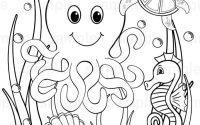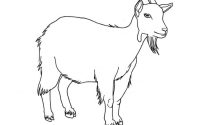Cute Cuddly Animals Coloring Pages
Color Palette and Visual Style

Cute cuddly animals coloring pages – Choosing the right color palette is crucial for creating appealing and engaging coloring pages. The colors selected significantly impact the overall mood and the target audience’s perception of the cute cuddly animals. A well-chosen palette enhances the cuteness factor and invites children to interact with the pages creatively.Color palettes should evoke feelings of joy, warmth, and comfort, aligning with the inherent charm of cuddly animals.
Consideration should also be given to the age range of the intended users, as younger children may respond better to brighter, more saturated colors while older children might appreciate more nuanced palettes.
Yo, peeps! Into cute cuddly animal coloring pages? Seriously, they’re the best for chill vibes. If you’re feeling extra creative, check out these awesome coloring pages littlest pet shop animals – they’re super adorable and perfect for unleashing your inner artist. Then, go back to those fluffy bunnies and playful puppies – so many cute cuddly options to color!
Color Palette Options and Their Visual Styles, Cute cuddly animals coloring pages
Five distinct color palettes, each with a unique visual style and target audience, are presented below. These palettes are designed to cater to a variety of preferences and age groups.
| Palette Name | Colors | Visual Style | Target Audience Segment |
|---|---|---|---|
| Pastel Paradise | Soft pinks, light blues, mint greens, creamy yellows, lavender | Soft, gentle, dreamy | Younger children (ages 3-6), those who prefer calming visuals |
| Rainbow Bright | Vibrant reds, oranges, yellows, greens, blues, purples | Bold, cheerful, energetic | Younger children (ages 3-7), those who enjoy bright and stimulating colors |
| Nature’s Embrace | Earthy browns, greens, muted yellows, soft oranges, beige | Warm, natural, calming | All ages, those who appreciate nature-inspired designs |
| Sweet Dreams | Deep blues, purples, soft grays, pale pinks, muted greens | Serene, calming, sophisticated | Older children (ages 7+), those who prefer more subtle and sophisticated palettes |
| Candyland Carnival | Bright pinks, vibrant purples, sunny yellows, lime greens, sky blues | Playful, whimsical, fun | Younger children (ages 4-8), those who enjoy playful and imaginative designs |
Additional Elements and Enhancements: Cute Cuddly Animals Coloring Pages

Adding simple yet engaging elements significantly enhances the appeal and educational value of children’s coloring pages. Careful consideration of text placement, border design, and subtle background textures can transform a simple Artikel into a captivating creative experience. This section explores several effective techniques to achieve this.
Text Element Integration
The inclusion of text on coloring pages can add a playful educational aspect. Three effective methods for integrating text are presented here. First, consider using simple, large, and clearly legible fonts for animal names directly beneath the illustration. For instance, “Fluffy the Bunny” could be placed below a picture of a rabbit. Second, short, descriptive phrases related to the animal or its actions can be incorporated.
For example, “Hop, hop, hop!” near a bunny, or “Roar!” near a lion. These phrases should be concise and easy for children to read and understand. Third, consider using simple rhyming couplets or short sentences as a fun element. For example, near a picture of a playful monkey: “Monkey see, monkey do, What will you color, me and you?” The font style should complement the overall aesthetic, choosing child-friendly fonts like Comic Sans or similar playful options.
Border Design Enhancements
Borders provide a visual frame, enhancing the overall presentation of the coloring page. Simple borders are key to avoiding visual clutter. A solid, thin line in a contrasting color is a classic and effective choice. A slightly thicker line could incorporate a simple repeating pattern, such as small dots, hearts, or stars, maintaining a child-friendly aesthetic. For a more intricate, yet still simple, border, consider a border made of small, repeating images relevant to the theme, such as paw prints for an animal coloring page or small flowers for a floral theme.
These borders should be understated, complementing the main illustration without overwhelming it. Avoid overly busy or complex designs that might distract from the coloring activity itself.
Background and Texture Incorporation
Subtle patterns and textures add depth and visual interest to the coloring page without distracting from the main illustration. A simple, lightly textured background can enhance the overall aesthetic. For instance, a very light dotted pattern, a subtle cloud pattern, or a faint, textured paper effect could be used. For animal designs, subtle texture can be added to the animal itself, such as lightly textured fur for a cat or slightly textured scales for a reptile.
These textures should be subtle enough not to interfere with the coloring process, but sufficient to add a touch of realism or visual interest. Avoid using highly contrasting or complex textures that might overpower the main illustration.
Engaging Design Elements
Simple, engaging design elements for children’s coloring pages should be visually appealing and age-appropriate. Examples include playful fonts, simple geometric shapes incorporated as background elements, or small, easily colorable decorative elements surrounding the main illustration. Consider using simple shapes like stars, hearts, or flowers as embellishments. These elements should be easy to color and add a touch of whimsy to the overall design.
Avoid overly complex or detailed elements that may overwhelm younger children. A balance between simplicity and visual interest is crucial.
Illustrative Descriptions for Images

These descriptions aim to evoke the visual appeal and coloring potential of each design, highlighting key features that contribute to their overall charm and suitability for a children’s coloring book. Each description focuses on specific details, emphasizing the cuddly nature of the animals and the artistic elements used in their depiction.
Panda Bear Coloring Page
The panda coloring page features a round, chubby panda bear sitting comfortably. Its large, dark eyes are wide and expressive, conveying a sense of gentle curiosity. The fur is depicted with a combination of smooth lines for the body and slightly textured strokes around the ears and paws, suggesting softness and fluffiness. The panda’s pose is relaxed and inviting, with its paws gently tucked under its chin.
Large, dark circles around its eyes are clearly defined, creating a striking contrast against the white fur. The overall design is simple yet effective, allowing for easy coloring while maintaining a visually appealing aesthetic. The simple line art is perfect for younger children, while the detail offers older children opportunities for shading and texture creation.
Kitten Coloring Page
This coloring page showcases a playful kitten curled up in a ball. The artist has masterfully rendered the texture of its fur through variations in line weight and density. Shorter, finer lines suggest the soft downy fur on its belly, while longer, slightly heavier strokes depict the thicker fur around its neck and tail. The kitten’s eyes are large and expressive, conveying a sense of playful innocence.
The pupils are carefully detailed, adding to the overall realism and charm of the design. The use of negative space around the kitten enhances its cuddly appearance, making it even more appealing to young colorists. The subtle shading around the face and paws adds depth and dimension to the image, hinting at the kitten’s soft, three-dimensional form.
Fluffy Bunny Rabbit Coloring Page
The fluffy bunny rabbit coloring page emphasizes texture and depth through skillful use of line weight and shading. The artist has employed a variety of line weights, using thinner lines for details like whiskers and finer fur, and thicker lines to Artikel the body and create a sense of form. The shading is subtle but effective, using darker lines to create shadows and suggest the roundness of the bunny’s body.
The bunny’s fur is depicted with a combination of short, wispy lines and longer, flowing strokes, creating a sense of softness and fluffiness. The ears are long and floppy, adding to the bunny’s overall charming and cuddly appearance. The detailed paws and whiskers add to the realism and visual appeal, making it a captivating image for coloring.



